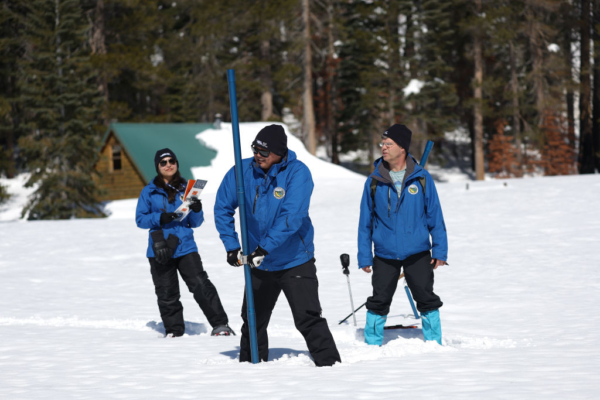California officials said on Thursday (January 2) that the state has had a steady start to its winter snowpack in 2025, but they warned that more storms are needed to ensure the state’s water supply.
Andy Reising, manager of the snow survey and water supply forecasting unit at the Department of Water Resources, said officials at the Phillips Station in the Sierra Nevada Mountains reported a snow depth of 24 inches. The snowpack water content at that monitoring station is currently at 91% of the seasonal average and 37% of the April 1 average, with April 1 typically being the peak snowpack date for the Sierra Nevada Mountains.
Reising noted that the current situation is looking good, but monthly storms are needed to continue. He also mentioned that while the northern part of California has experienced a series of storms, the southern part remains dry.
Snowpack serves as a massive frozen reservoir that melts in the spring and flows into streams, providing nearly one-third of California’s water supply each year. California has built a complex system of canals and dams to collect water resources and store them in massive reservoirs for use during times without rainfall or snowfall.
These measurements are closely monitored in California. The state has the largest population in the country, with 39 million people, and is responsible for producing over one-third of the nation’s vegetables and three-fourths of its fruits and nuts. The health of the snowpack plays a crucial role in determining whether California can supply enough water for farms and cities in the summer.
According to state data, water levels in many of California’s state-operated reservoirs are at two-thirds or three-quarters of capacity, well above historical average levels for this time of the year, thanks to snowfall exceeding average levels over the past two years.
However, state water officials point out that precipitation in the mountainous areas of central and southern California is significantly lower than in the northern regions. State climatologist Michael Anderson mentioned that a persistent high-pressure system along the Pacific coast continues to divert stormy weather northward and is expected to continue this trend in the coming weeks, potentially making it difficult for the snowpack levels in central and southern California to reach historical average levels. They are remaining vigilant about this situation.

